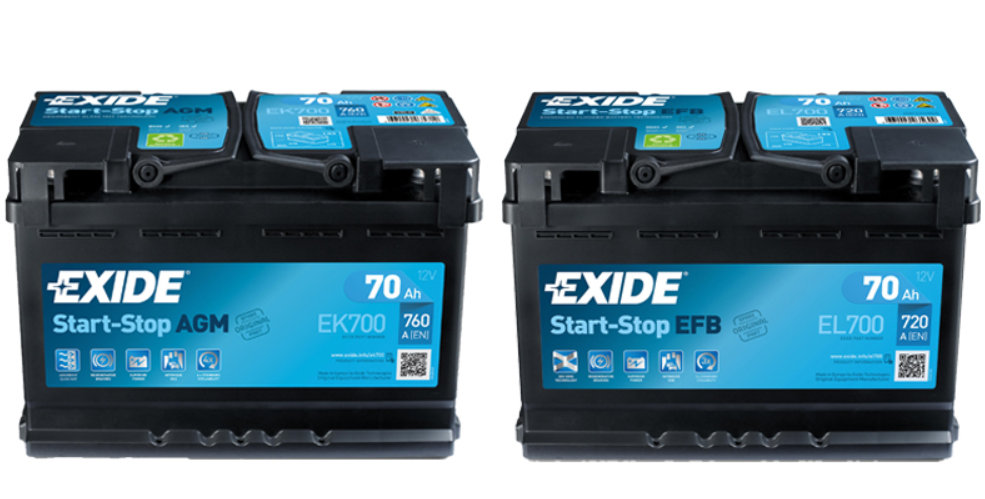Choosing the ideal battery for your vehicle or off-grid power system can often feel overwhelming due to the myriad of options at your disposal. Absorbed Glass Mat (AGM) and Enhanced Flooded Battery (EFB) stand out as two of the most sought-after choices in today’s market. This comprehensive guide delves deep into a side-by-side comparison of AGM and EFB batteries, empowering you to make an educated decision tailored to your unique requirements.

AGM Batteries
AGM batteries, or Absorbed Glass Mat batteries, are a type of sealed lead-acid battery known for their unique characteristics that make them a popular choice in various applications. One of the primary benefits of AGM batteries is their maintenance-free nature. Since they do not require water or electrolyte maintenance, they are a convenient option for those who prefer to avoid the hassle of regularly inspecting and maintaining a battery. Additionally, the sealed design of AGM batteries ensures resistance to leaks and spills, rendering them a safer option for use in confined spaces.
Advantages and Disadvantages of AGM Batteries:
| Advantages | Disadvantages |
|---|---|
| Longer lifespan (up to 10 years) | Higher initial cost |
| Higher capacity and stable power output | Sensitive to overcharging |
| Resistant to vibration and deep discharge cycles | |
| Maintenance-free | |
| Suitable for a wide range of applications | |
| Reduced environmental impact due to longer lifespan |
EFB Batteries
Enhanced Flooded Batteries (EFB) are a relatively new type of battery that has gained traction in recent years. One of the main advantages of EFB batteries is their extended lifespan. Their unique design enables EFB batteries to endure a larger number of charge/discharge cycles compared to other battery types, resulting in a longer lifespan and less frequent replacement needs.
EFB batteries also exhibit superior performance in colder temperatures, making them an ideal choice for use in cold climates. Furthermore, EFB batteries have a lower initial cost compared to AGM batteries.
Advantages and Disadvantages of EFB Batteries:
| Advantages | Disadvantages |
|---|---|
| More affordable upfront | Shorter lifespan (4-5 years) |
| Primarily used in vehicles | Lower capacity and potential performance issues in extreme temperatures or under heavy loads |
| Lower overall maintenance cost | Regular maintenance required (checking and refilling electrolyte levels) |
| Limited suitability for a wide range of applications |
What is the difference between AGM and EFB batteries?
When using AGM and EFB batteries, it’s essential to consider the specific application and requirements. AGM batteries are an excellent choice for high-power applications, such as solar power systems, recreational vehicles, and boats, as well as backup power for homes and businesses. On the other hand, EFB batteries are primarily designed for use in vehicles and excel in cold temperature environments.
In terms of environmental impact, both AGM and EFB batteries have their merits. AGM batteries have a longer lifespan, which reduces the overall environmental impact as fewer batteries need to be produced and disposed of over time. However, EFB batteries are more affordable upfront, making them an attractive option for those seeking a lower-cost alternative.
Comparison of AGM and EFB Batteries:
| Feature | AGM Battery | EFB Battery |
|---|---|---|
| Maintenance | Maintenance-free | Regular maintenance (checking and refilling electrolyte levels) |
| Capacity | Higher capacity and stable power output | Lower capacity and potential performance issues in extreme temperatures or heavy loads |
| Design | Sealed | Flooded |
| Discharge Rate | High | Moderate |
| Lifespan | Longer lifespan (up to 10 years) | Shorter lifespan (4-5 years) |
| Cold Temperature Performance | Moderate | Good |
| Cost | Higher initial cost | Lower initial cost |
| Ideal Use | High-power applications (RVs, boats, off-grid solar systems) | Cold temperatures, longer lifespan, lower cost |
| Environmental Impact | Less due to longer lifespan | Less due to longer lifespan |
Can I use efb battery instead of agm?
Yes, you can but before that please read the following differences between AGM and EFB batteries in detail:
- Cost: AGM batteries have a higher initial cost but a longer lifespan, which offsets the initial expense over time. EFB batteries have a lower initial cost but a shorter lifespan.
- Performance and Capacity: AGM batteries provide higher capacity and stable power output, are more resistant to vibration, and handle deep discharge cycles better. EFB batteries have lower capacity and may not perform as well in extreme temperatures or heavy loads.
- Maintenance: AGM batteries are maintenance-free, whereas EFB batteries require regular maintenance such as checking and refilling electrolyte levels. AGM batteries are more convenient, while EFB batteries may have lower overall maintenance costs.
- Lifespan: AGM batteries have a longer lifespan of up to 10 years, while EFB batteries last approximately 4-5 years. AGM batteries require less frequent replacement, but EFB batteries are more affordable initially.
- Applications: AGM batteries are suitable for various applications, including solar power systems, recreational vehicles, and boats, as well as backup power for homes and businesses. EFB batteries are primarily used in cars and other vehicles.
- Environmental Impact: Both AGM and EFB batteries are lead-acid batteries and can be recycled at the end of their lifespan. However, AGM batteries have a longer lifespan, reducing the environmental impact of production and disposal.
Conclusion
In conclusion, AGM and EFB batteries are excellent options for a wide range of applications. AGM batteries are maintenance-free, sealed, and have a high discharge rate, making them ideal for high-power applications. EFB batteries offer a longer lifespan, better cold temperature performance, and lower initial cost. The choice between AGM and EFB batteries ultimately depends on your specific needs and requirements. Consider the type of application, the environment, and the cost to make the best decision for your situation.